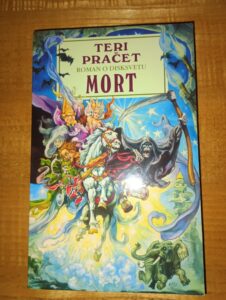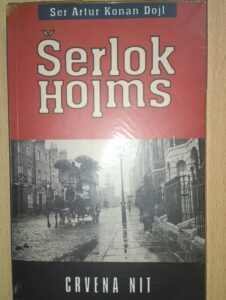The Miserable Mill (2000)

…………………………………………………
The Miserable Mill Review
The Miserable Mill is a 2000 children’s dark comedy novel by Lemony Snicket. It is the fourth entry in the Series of Unfortunate Events and the weakest one so far.
………………………………………………….
“Appearance matters a great deal because
you can often tell a lot about people by looking
at how they present themselves“
…………………………………………………..

…………………………………………………..
The children are sent to work in a mill in very demanding, inhumane conditions. And of course Olaf is there, this time disguised as a woman, to hunt their treasure once more. I say that this is the weakest entry in the series so far because it’s by far the silliest. Yes, these novels can get quite silly, all of them at least in some chapters, but this one was often way too silly for its own sake.
I am of course talking about the finale with all of that extended action piece with the buzz saw involving all characters. I found that part entirely implausible, and everything involving Sunny there was too ridiculous, and certainly not cute.
But otherwise the book is another wonderful delight. In particular, I really admired the author’s once again superb depiction of imagery and its setting as the mill is instantly memorable and brought to life beautifully thanks to vivid descriptions of it. It’s also superbly utilized into storytelling and suspense.
Interestingly enough, this novel incorporates heavily the idea of hypnotism. And it actually worked to my surprise as I usually dislike that in my media, but here it was superbly handled, and it fits the source material’s wordy nature by utilizing so heavily on the importance of words. How the kids solved this problem was excellent, and those are some of the best, most clever parts of the book.
…………………………………………………..

…………………………………………………..
So Klaus here is of course a victim. Although that was a bit of a problem, it still worked because it led to Violet doing all the heavy lifting. Yes, I would have liked a more substantial role for Sunny as well, but she was endearing enough as she always is. And it’s not bad being a victim and certainly the author pulled a lot of sympathy and levity when it comes to his hypnotized condition here.
But yes, Violet got a chance to shine here by basically uncovering the whole plan from the villains and basically undoing the hypnosis all by herself. And her deduction skills took some time which was more grounded in reality and I loved that.
As for Count Olaf, he’s here at his somewhat less threatening mode, but quite funny as him being a lady and being so bad at that disguise was hilarious to witness. His plan here is actually rather well thought-out and I really liked the characters of both Dr. Orwell (who had the most gruesome death so far in the series) and “Flacutono”. I appreciated the reduced role of stupid Mr. Poe here, and I found the character of Sir fascinating, and I do wonder if we’ll ever going to find out who he is exactly later on in the series.
…………………………………………………..

…………………………………………………..
The Miserable Mill is at its best when dealing with the imagery of eyes which was superbly effective and mysterious. The world building is once again terrific, and the use of the setting, as well as the atmosphere and the mystery are all very stellar. It’s so well written across the board, but sometimes the author has a tendency to explain things too much.
The Miserable Mill has some problems such as some overly silly moments and too many explanations, but the imagery, world building and mystery to it are all truly terrific as is the use of Violet. I also loved all of the new characters and the villains. It’s still a very good book, but just not up to par with the previous installments.







